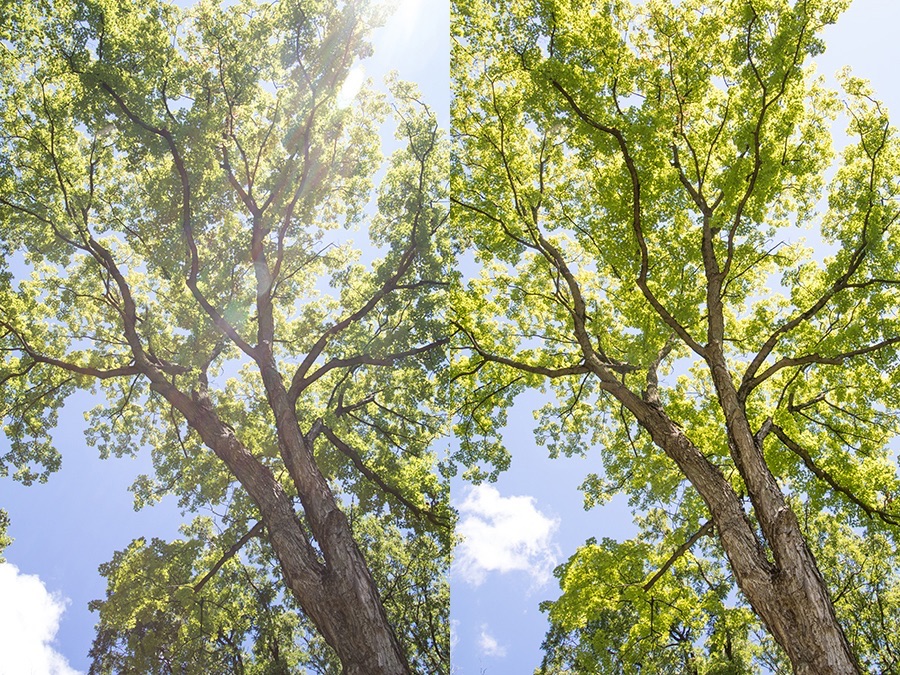
I recently acquired a Canon 10-22mm f/3.5-4.5 Lens to use with my Canon 80D body for tree photography. The lens is considered a wide zoom, but it doesn’t go so far as to give a fish-eye effect. It does capture a very wide angle of view, however— with its widest angle at 107°. As wonderful as this is for capturing the full width of a large area, it can also come with some tricky conditions to deal with. One of those is glare. Since I’m somewhat new to using this lens, I ran into this issue recently while photographing the crowns of large trees and pointing the camera directly upwards.
Here I am pointing my camera directly up towards the crown of the tree you see directly behind me. I wanted to capture as much of the trunk and crown as I could:

It was midday and you can see from my shadow the sun was pretty much overhead. What I wanted to see as a result was the underside of the tree with a bright blue sky background.
The result was this:
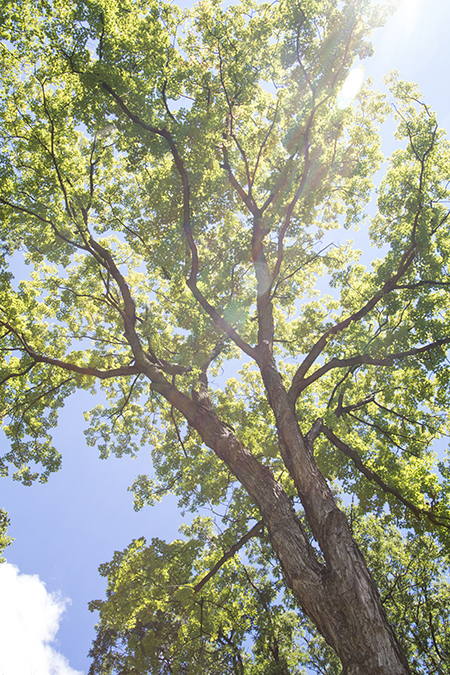
When I reviewed my image on the LCD screen, I was obviously disappointed. There was no way I could “fix” this image in any post-processing—at least no way that I know of. After a couple of adjustments with the camera, I realized no angle I could’ve shot from would’ve eliminated this lens flare. So, I tried improvising:
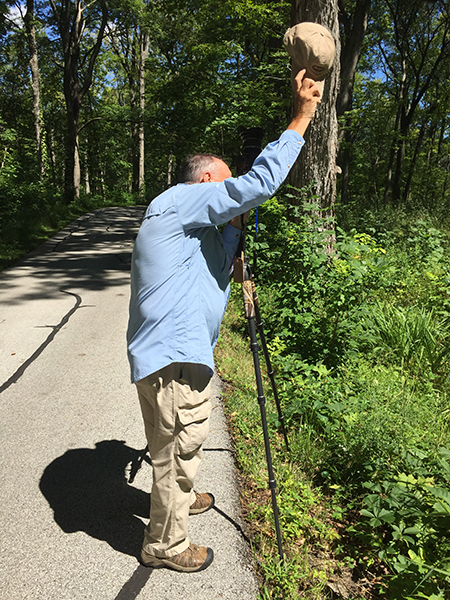
I took my cap off and positioned it at just the right location to block the sun’s glare that was causing the lens flare. You can also use something equivalent, but at the moment the only thing I had available was my cap. I did have to move it around a bit to get rid of the flare but I was pleased with the result:
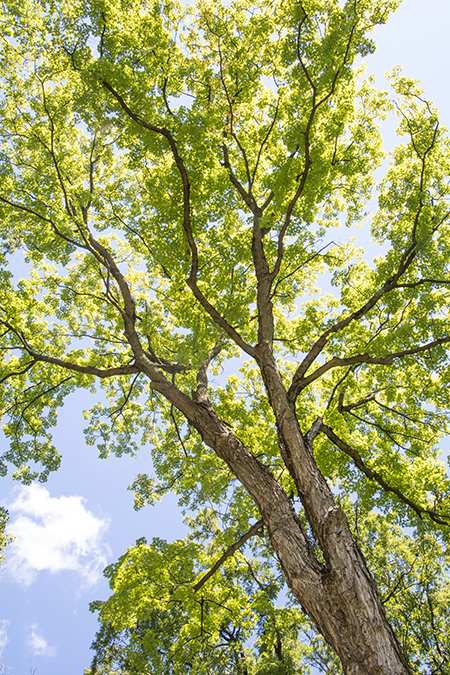
Much more of what I was looking for. But, make sure you don’t do this . . .
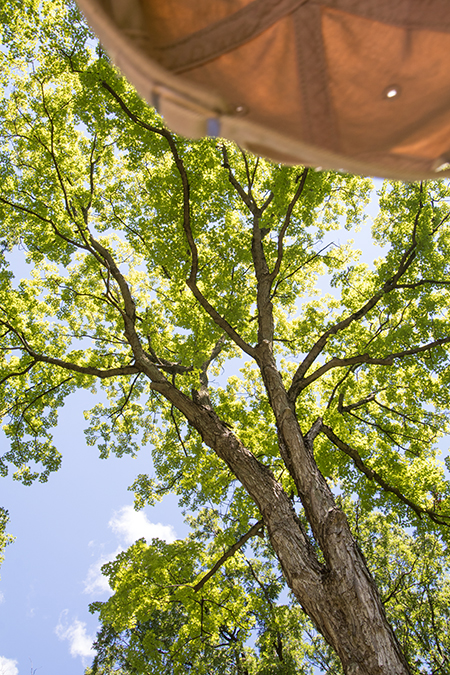
This post is the first of several tips I plan to share on tree photography. They are fascinating subjects to explore. As a photonaturalist, tree photography not only brings the beauty of their presence, but also an exploration into identification, ecology, history and folklore.
Get more photography tips in our free weekly newsletter
 About the Author: Vic Berardi is a raptor lover that lives in the Midwest. He is the founder of the Illinois Beach State Park Hawk Watch and every weekend of the year you’ll find him searching for hawks and photographing them. Several of his photographs have been published in a leading raptor journal and in articles he has written. During the year he gives presentations teaching others about hawks and hawk migration. Vic also photographs dragonflies and wild flowers and is always respectful of nature and its creatures.
About the Author: Vic Berardi is a raptor lover that lives in the Midwest. He is the founder of the Illinois Beach State Park Hawk Watch and every weekend of the year you’ll find him searching for hawks and photographing them. Several of his photographs have been published in a leading raptor journal and in articles he has written. During the year he gives presentations teaching others about hawks and hawk migration. Vic also photographs dragonflies and wild flowers and is always respectful of nature and its creatures.
Great tips Vic.
I have that Canon lens. Great for such efforts as tree crowns.
Thanks for sharing.
Thank you D. Settle!
Thank you Vic, sometimes the simple answers are exactly what’s required!
Exactly Steve 🙂
Hats off to you Vic for this tip. No matter how much you spend on the tech some times, as in this example, there could be a low tech fix.
Yes, sometimes it’s as simple as tipping a hat 🙂
I used the same technique to capture a church steeple at night when the street light giving the desired lighting also caused some flaring. Thanks for the tip.
You’re welcome John! I haven’t done much night photography but glad this little trick works for your application!
Excellent tip. Two more like this one and you’ll have a hat-trick.
LOL Phil, does that mean I need the followup tricks to include the use of a hat? 🙂
Very good short article. I took a class from a gentleman that they called the professor. He always said lighting was everything and he would take all the time needed to get it right. He’d use wadded up foil, flat shinny foil, different colors of paper to reflect what he was looking for. Then when satisfied he would work on composition. He’s gone now, too early for his age but you can tell his students from others in contests by looking at the lighting. RIP Professor.
Sorry to hear about the professor’s passing but thank you for your comment!